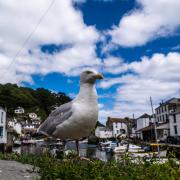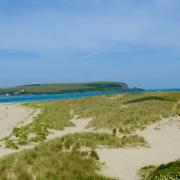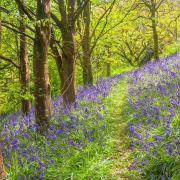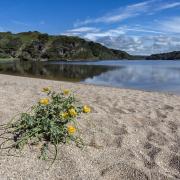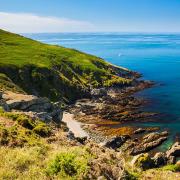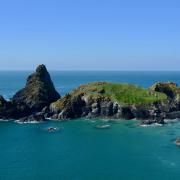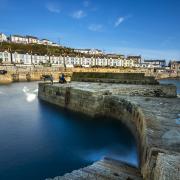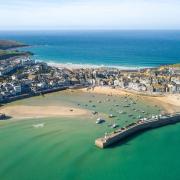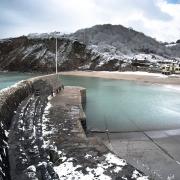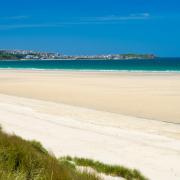Award-winning photographer David Chapman continues his odyssey around Cornwall with a trip to the Camel Valley

The Camel Estuary Area of Outstanding Natural Beauty (AONB) covers the stretch of the Camel between (but not including) Padstow and Wadebridge. On the south side of the river it includes the creeks of Little Petherick and Pinkson.
The best point of access is along the Camel Trail from Wadebridge or Padstow. It is also possible to park and walk from Little Petherick. On the north side of the estuary there isn’t much access though for bird watchers there is the Burniere Hide, owned by the Cornwall Bird Watching and Preservation Society, accessed from Trewornan Bridge near Wadebridge.
The Camel Trail is a wonderful facility for locals and tourists alike. Using a disused railway line the route from Wadebridge to Padstow covers the largest part of this AONB on a flat, well-surfaced cycle trail of about five and a half miles. In my experience it’s best to visit early in the morning or out of season to avoid the crowds.
A couple of years ago I decided to try a different approach to looking around this AONB, a friend and I took out kayaks for the day, launching them from Rock we headed up-river on a rising tide, crossing to the south side of the estuary to look at Pinkson Creek before heading back on a falling tide.

September is a lovely month for exploring the river. The weather is still fairly warm, the number of visitors has decreased slightly and for naturalists, the number of birds is quite high. In fact it was bird life that kept us enthralled from the beginning of our trip.
September is a month of change in the natural world with migrants heading south. It isn’t unusual nowadays to see the odd osprey passing through Cornwall and though we didn’t have that much luck we did see a good variety of seabird migrants including common and sandwich terns. Terns are a bit like water-based kestrels, they hover above the water and then plunge in to catch small fish. This strategy is quite tiring so between sessions of fishing they rest on the nearest safe roosting places which in the estuary near Rock are the mooring buoys.
Joining the terns on the mooring buoys we saw a lot of Mediterranean gulls. These gulls were once quite rare in the UK but have started to breed here and are seen most commonly in late summer. They are similar to black headed gulls but relatively easy to distinguish even out of breeding plumage, once you’ve seen a few of them. Look for their more substantial beaks, slightly larger size, more rounded wings. Also notice that black headed gulls have grey wings with a white leading edge, whereas the wings of Mediterranean gulls are uniformly pale. There were also plenty of other gulls and a few cormorants sitting on the various buoys and boats.
We soon developed the best strategy for getting photos of the birds. By paddling our kayaks up-current of the mooring buoys we could allow the flow of water to carry us past them. The birds had little fear of us unless we had to start paddling again to avoid a collision.

The crossing from the north side of the river to Pinkson Creek was a little choppy so we put cameras into drybags and paddled hard. Once into the shelter of the much smaller creek we relaxed and enjoyed the sunshine and began to spot a few smaller wading birds such as dunlin and ringed plover. We were fortunate enough to hear the high-pitched whistle, and then spot the orange and blue plumage, of a stunning kingfisher as it shot past us at high speed with wings whirring.
Wildlife was definitely the order of the day. Apart from birds most of the photos I took were of yachts set against the distant landscape. The low angle of view from a kayak giving an unusual perspective and we even had a bit of mist to add atmosphere.
THE BEST PHOTOGRAPHIC LOCATIONS The walk along Little Petherick Creek is very attractive and nearby Dennis Hill gives a good view up-river over the AONB.

The most attractive parts of the Camel Trail are where it crosses the smaller creeks: Little Petherick, Oldtown Cove and Pinkson.
For photographing terns, gulls and other seabirds we found the mooring buoys on the Rock side of the river most productive. The smaller creeks have greater potential for getting closer to small wading birds but a longer lens will be required for them.
If you have access to a kayak then try venturing further up-river beyond Wadebridge, an area which is more sheltered and very tranquil on a high tide.
Just outside the AONB the town of Padstow has great photographic potential with plenty of colourful subjects in and around the harbour area.

THE TECHNICAL BIT
If you are taking a camera out on a kayak it is worth investing in a dry bag to store the camera in. It might also be worth having a rainproof cover which can be left on the camera when in use. I keep a small hand towel in the dry bag with my camera so I can dry my hands before holding the camera.
Using a camera from a kayak is no different to using one on dry land though I would recommend a slightly faster shutter speed for all purposes (I suggest a minimum of 1/500th of a sec and faster for telephoto lenses) as it will be impossible to hold the camera still and I suggest using image stabilisation if your camera or lens has that option.

One thing you want to avoid, when using a camera on a kayak, is changing lenses all the time so a zoom lens with a wide range of focal lengths is a good idea. I used a 100 to 400mm lens on my DSLR which was ideal. I found the shorter focal length good for landscape photos and could zoom in to get images of the birds.
Finally it might be worth checking your insurance policy before you set off!
This feature first appeared in Cornwall Lfie September 2020. Find out our latest subscription offers here.



















